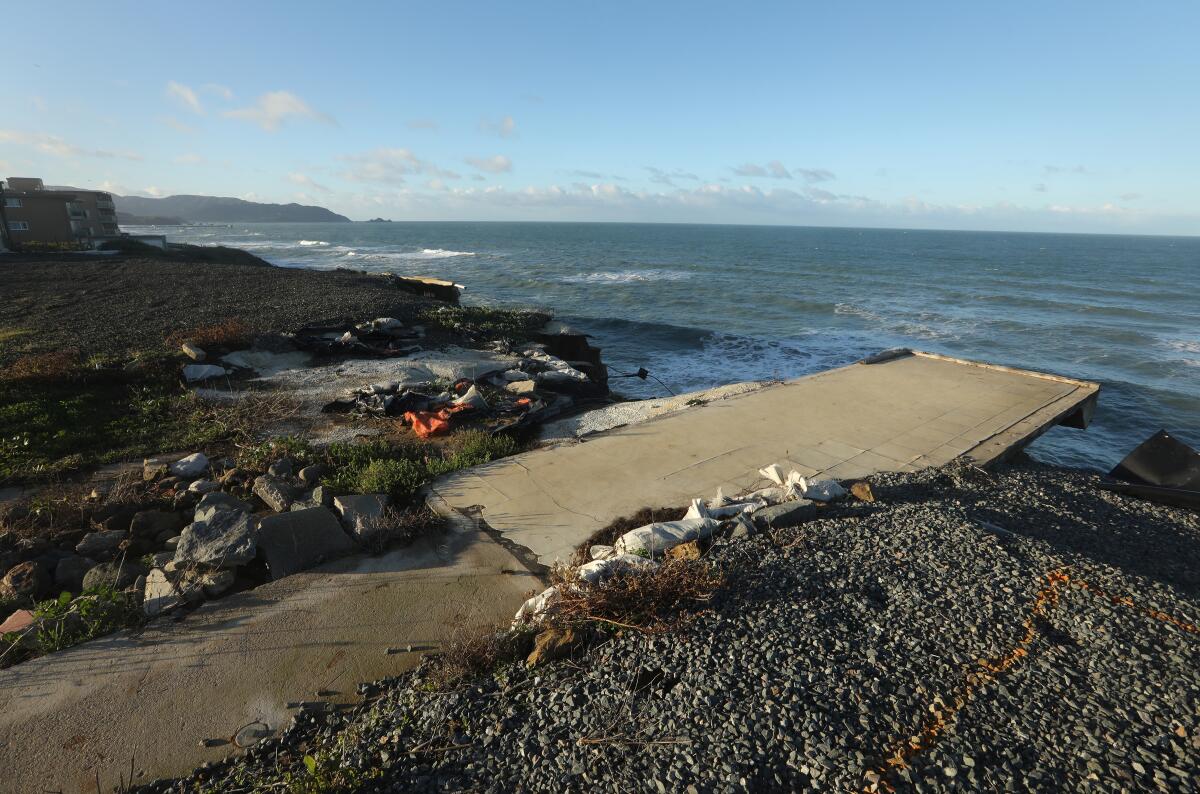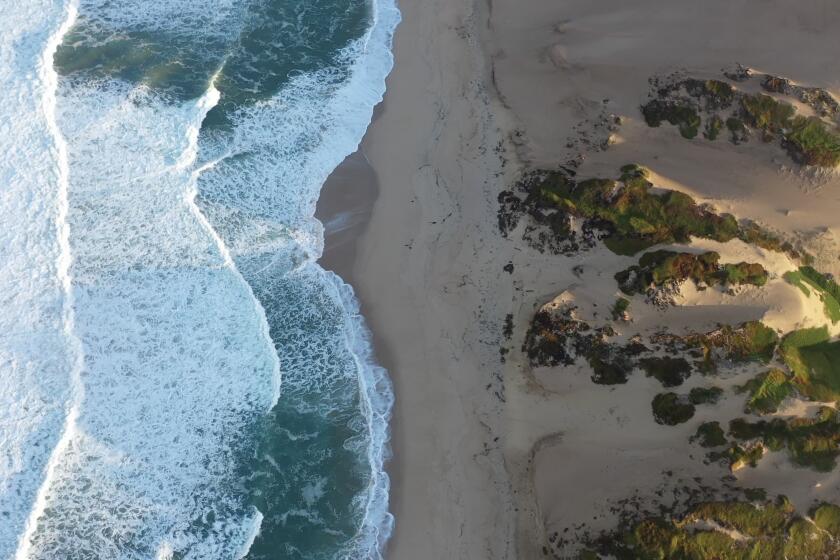Op-Ed: California law needs to catch up to sea level rise

Last year, California’s massive wildfires were impossible to ignore. Four million acres burned. People and animals died, homes were lost, power faltered for days at a time, air quality deteriorated, the sky over San Francisco turned orange.
And yet as massive a challenge as wildfire presents — especially as we face another drought year — a different climate crisis could rival it as a destroyer of the California dream: sea level rise.
Most of California’s economy and its people — over $2 trillion in GDP; 68% of the population — are located in its coastal counties. Rising seas pose “a serious and costly threat” for those counties, according to the Legislative Analyst’s Office, which in 2019 estimated a 7-foot rise by the end of the century.
Disasters linked to sea level rise could be “ten times the scale of the worst wildfires and earthquakes that we’ve experienced in modern California history,” according to Patrick Barnard, lead author of a 2019 U.S. Geological Survey study published in the journal Nature. Rising seas could displace half a million Californians at a cost of more than $150 billion by 2100, with 150,000 people and $30 billion in property at risk before 2050.
There is, however, a window of opportunity to do for sea level what we mostly failed to do for fire — learn and apply the lessons of preparedness sooner rather than later.
As coastal cities in California fight to defend their homes and roads from sea level rise, the small city of Marina is taking a different path, banning seawalls and adopting a policy known as managed retreat.
California’s conflagrations follow more than 100 years of misguided forest management aimed at suppression of natural fire and indigenous burns. Two to four times the normal amount of woody fuel accumulated and at the same time, many of the largest, healthiest, fire-resistant trees were logged out. This combined with poorly planned (often unplanned) growth on the so-called wildland urban interface put growing numbers of people in harm’s way just as hotter drier weather extended the state’s fire season by at least 75 days since the 1970s.
So far, California has experienced less than a foot of sea level rise, but even that amount is forcing expensive repairs from Humboldt Bay (shoreline restoration between Eureka and Arcata) to Imperial Beach in San Diego (moving sewer and water lines from beneath a regularly flooded street). A businessman I know in San Francisco had to invest more than $200,000 to raise his bay-side parking lot because of sea level rise. High tides that used to flood the area occasionally now lap against his new lot once or twice a month, whenever the tide goes above six feet.
Before the inundation gets unmanageable, we can act to preserve beaches, mitigate damage to infrastructure and property, improve the way we plan shoreline development so that we can better absorb the rising sea rather than fight losing battles with it. The California Legislature has several sea level rise bills to address the current and future danger including Senate Bill 1, the Sea Level Rise Mitigation and Adaptation Act, and Assembly Bill 67, the Sea Level Rise Preparedness Act.
One advantage the coast has over the fire-prone and overbuilt wildland urban interface is that much of the sprawl that could have crowded California’s 1,100 miles of coastline over the past half century was blocked by the California Coastal Commission, which set up shop at voters’ instruction in 1972.
One of the Coastal Commission’s tools is 126 local coastal programs, planning documents that must be maintained and updated by seaside counties and cities and can be put to use against rising seas. SB 1 would direct the commission to incorporate the best projections about size and location of sea level rise into these programs. It would also provide public funds to aid the process, with a focus on environmental justice to help low-income communities of color.
AB 67 addresses state infrastructure. It would ensure that state agencies incorporate sea level rise estimates in the development of roads, ports, airports, water-treatment, desalination and power plants. In particular, it seeks to advance “natural infrastructure” such as restored estuaries, wetlands, dunes and sea grasses that could generate thousands of new “blue” jobs while reducing the impact of rising water at a lower cost than hardened structures such as seawalls.
California, long a leader when it comes to innovation and environmentalism, is playing a tragic game of catch-up when it comes to fire management strategies for a hotter, drier climate. Learning from that mistake, we should begin immediately to apply the lessons of resilience to our coastline. The sea is already rising, but if we act, we can avoid waves of pain in the coming years.
David Helvarg is an author and founder of Blue Frontier, an ocean conservation group. He reported on California’s 2020 wildfires for National Geographic.
More to Read
A cure for the common opinion
Get thought-provoking perspectives with our weekly newsletter.
You may occasionally receive promotional content from the Los Angeles Times.











